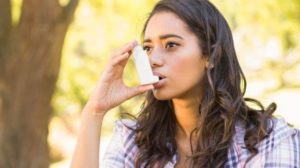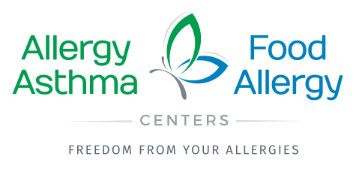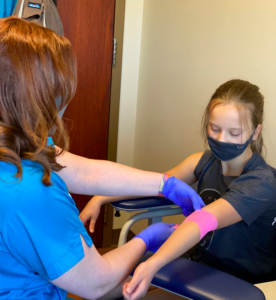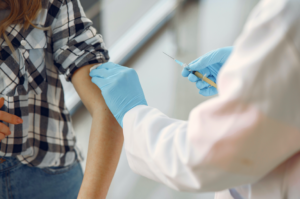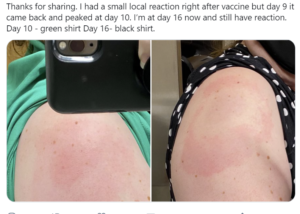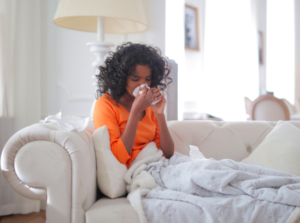
Outdoor Allergens
Seasonal allergic rhinitis, commonly referred to as hay fever, affects millions of people worldwide. Symptoms include sneezing, nasal congestion, runny nose, and itchiness in your nose, the roof of your mouth, throat, eyes, or ears. The most common seasonal triggers are pollen and mold spores in the air, which trigger a chain reaction in your immune system.
Your immune system controls how your body defends itself. For instance, if you have an allergy to pollen, the immune system identifies pollen as an invader or allergen. Your immune system overreacts by producing antibodies called Immunoglobulin E (IgE). These antibodies travel to cells that release chemicals, causing an allergic reaction.
Pollen
Pollen consists of tiny grains needed to fertilize many kinds of plants. Pollen from plants with colorful flowers, like roses, usually do not cause allergies. These plants rely on insects to transport the pollen for fertilization. On the other hand, many plants have flowers that produce powdery pollen that is easily spread by wind. These culprits cause allergy symptoms.
Each plant has a period of pollination that does not vary much from year to year. Trees pollinate in the spring, grasses in the early summer, and weeds in the late summer/fall. In the St. Louis area, major trees causing symptoms in the spring are oak, ash, and mulberry. Ragweed is a major fall allergen, which typically causes symptoms around Labor Day. The weather can affect the amount of pollen in the air at any time. In warmer places, pollination can be year-round.
Molds
Molds are tiny fungi related to mushrooms but without stems, roots or leaves. Molds can be almost anywhere, including soil, plants, and rotting wood. Their spores float in the air, much like pollen. Outdoor mold spores begin to increase as temperatures rise in the spring. In the United States, mold spores reach their peak in July in warmer states and October in the colder states. They can be found year-round in the South and on the West Coast.
Pollen and Mold Levels
Pollen and mold count measures the number of allergens present in the air. The National Allergy Bureau is the nation’s only pollen and mold counting network certified by the American Academy of Allergy, Asthma & Immunology (AAAAI). The NAB compiles pollen and mold levels from certified stations across the nation. You can find these counts for different geographic areas here. Counts for St. Louis can be found at the St. Louis County Pollen and Mold Center.
Effects of Weather and Location
The severity of your symptoms may be affected by recent contact with other allergens, the amount of pollen exposure, and your sensitivity to pollen and mold. Hay fever symptoms are often less prominent on rainy, cloudy, or windless days because pollen does not move around during these conditions. Pollen tends to travel more with hot, dry, and windy weather, which can increase your allergy symptoms.
Treatment
If your seasonal symptoms are making you miserable, we can help!
As board-certified allergists, we have the background and experience to determine which allergens, if any, are causing your symptoms. This information will form the basis of a personalized treatment plan to help alleviate your symptoms, including recommendations on how to avoid or minimize contact with your allergens where possible.
If your symptoms continue or if you have them for many months of the year, you may benefit from allergy immunotherapy (allergy shots). This treatment involves receiving regular injections given in gradually increasing doses. This helps your immune system become more resistant to the specific allergen and lessen your symptoms as well as the need for medications.
There are also simple steps you can take to limit your exposure to the pollen or molds that cause your symptoms:
Tips
- Keep your windows closed at night and if possible, use air conditioning, which cleans, cools, and dries the air.
- Try to stay indoors when the pollen or mold counts are high. If your symptoms are severe, wear a pollen mask if long periods of exposure are unavoidable. When you return indoors, take a shower, shampoo your hair and change clothes.
- Avoid being responsible for mowing lawns or raking leaves. This stirs up pollen and molds. Also, avoid hanging sheets or clothes outside to dry.
- When traveling by car, keep your windows closed.
- Take any medications as prescribed.
- Avoiding exposure during times of high pollen and mold counts will help ease symptoms.
- The majority of hay fever medications work best if started before a pollen season begins. For spring allergies, we typically recommend starting medications around Valentine’s Day.
- Allergy shots can often provide long-term relief of hay fever symptoms.
Source: aaaai.org/conditions-and-treatments/library/allergy-library/outdoor-allergens
Indoor Allergens
Millions of people suffer year-round from allergy symptoms caused by indoor allergens. These culprits include dust mite droppings, animal dander, cockroach droppings, and molds.
When allergy symptoms occur year-round, the condition is called perennial allergic rhinitis. In addition to causing allergy symptoms, allergens can also trigger asthma flare-ups in people with allergic asthma.
Dust mites
Dust mite allergens are a common trigger of allergy and asthma symptoms. While they can be found throughout the house, these microscopic creatures thrive in warm, humid environments such as bedding, upholstered furniture, and carpeting.
Because so much time is spent in the bedroom, it is essential to reduce mite levels there. Encase mattresses, box springs, and pillows in special allergen-proof fabric covers or airtight, zippered plastic covers. Bedding should be washed weekly in hot water (130° F) and dried in a hot dryer. Allergen-proof covers are available for comforters and pillows that can’t be regularly washed.
Keep humidity low by using a dehumidifier or air conditioning. Wall-to-wall carpeting should be removed as much as possible. Instead, throw rugs may be used if they are regularly washed or dry cleaned.
Pet Allergens
There are no truly “hypoallergenic” breeds of dogs or cats. That is because people are not allergic to an animal’s hair, but to an allergen found in the saliva, dander (dead skin flakes), or urine of an animal with fur. While there are no cats and dogs that do not produce allergens, the amount of allergen exposure from pets may vary somewhat depending on the breed.
Pet allergy symptoms typically occur within minutes, with short-term exposure. With more chronic exposure symptoms may occur more chronically and not as acutely. For some people, symptoms build and become most severe 8 to 12 hours after contact with the animal. People with severe allergies can experience reactions in public places if dander has been transported on pet owner’s clothing.
If you have a pet that you are allergic to, try to minimize contact and keep the pet out of the bedroom and other rooms where you spend a great deal of time. As with dust mites, vacuum carpets often or replace carpet with a hardwood floor, tile, or linoleum. Keeping an animal outdoors is only a partial solution since homes with pets in the yard still have higher concentrations of animal allergens. If you have a cat allergy, there is a specific cat food that can decrease to some extent the amount of allergen produced by cats. You can read about that here Pro Plan LiveClear Allergen Reducing Cat Food.
While dander and saliva are the sources of cat and dog allergens, urine is the source of allergens from rabbits, hamsters, mice, and guinea pigs; so ask a non-allergic family member to clean the animal’s cage.
If you have a pet allergy, allergy immunotherapy (allergy shots) could be a great option! This strategy can often provide significant and long-term relief.
Cockroaches
Cockroaches are often found in the homes of densely populated urban areas, schools, or commercial buildings, but these creatures can lurk almost anywhere. This does not mean that you have a dirty house or living area.
Block all areas where roaches can enter the home. This includes crevices, wall cracks, and windows. Cockroaches need water to survive, so fix and seal all leaky faucets and pipes. Have an exterminator go through the house when your family and pets are gone to eliminate any remaining roaches.
Keep food in lidded containers and put pet food dishes away after your pets are done eating. Vacuum and sweep the floor after meals, and take out garbage and recyclables. Use lidded garbage containers in the kitchen. Wash dishes immediately after use and clean under stoves, refrigerators, or toasters where crumbs can accumulate. Wipe off the stove and other kitchen surfaces and cupboards regularly.
Indoor Molds
Indoor molds and mildew need dampness typically found in basements, bathrooms, or anywhere with leaks. Get rid of mold growth on hard surfaces with water, detergent and, if necessary, 5% bleach (do not mix with other cleaners). Then dry the area completely. If mold covers an area of more than 10 square feet, consider hiring an indoor environmental professional. For clothing, washing with soap and water is best. If moldy items cannot be cleaned and dried, throw them away.
Repair and seal leaking roofs or pipes. Using dehumidifiers in damp basements may be helpful, but empty the water and clean units regularly to prevent mildew from forming. All rooms, especially basements, bathrooms, and kitchens, require ventilation and cleaning to deter mold and mildew growth. Avoid carpeting on concrete or damp floors, and storing items in damp areas.
Source: aaaai.org/conditions-and-treatments/library/allergy-library/indoor-allergens
